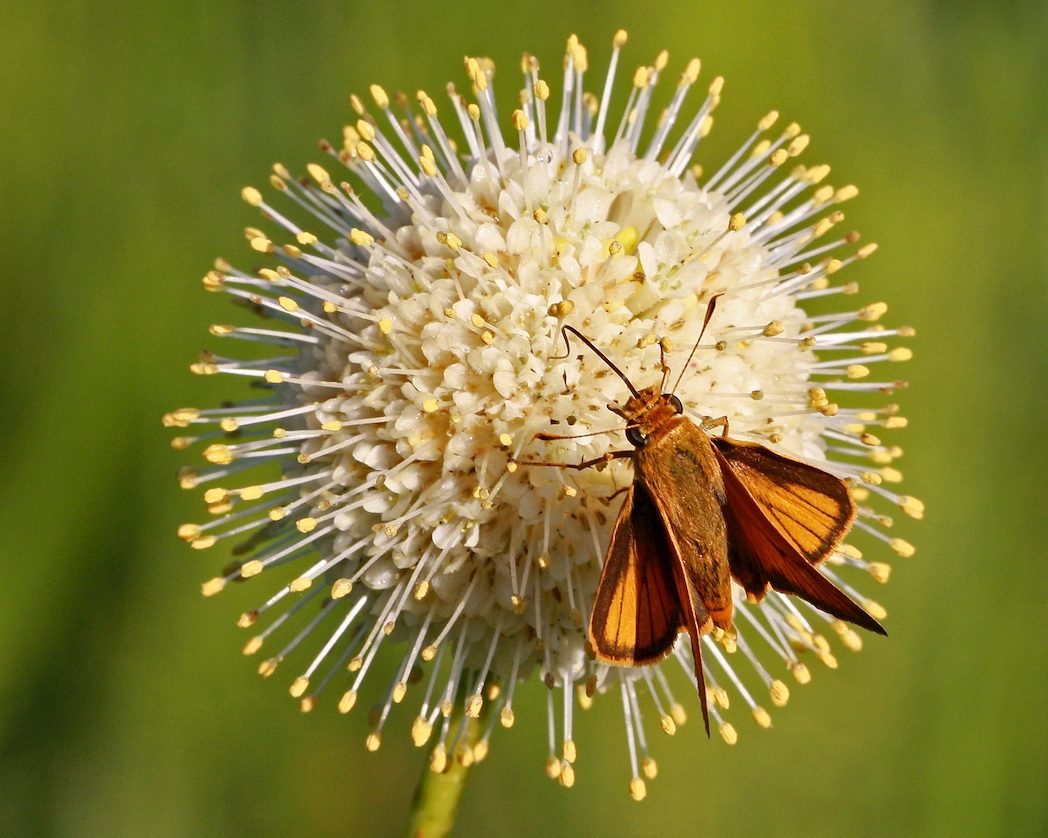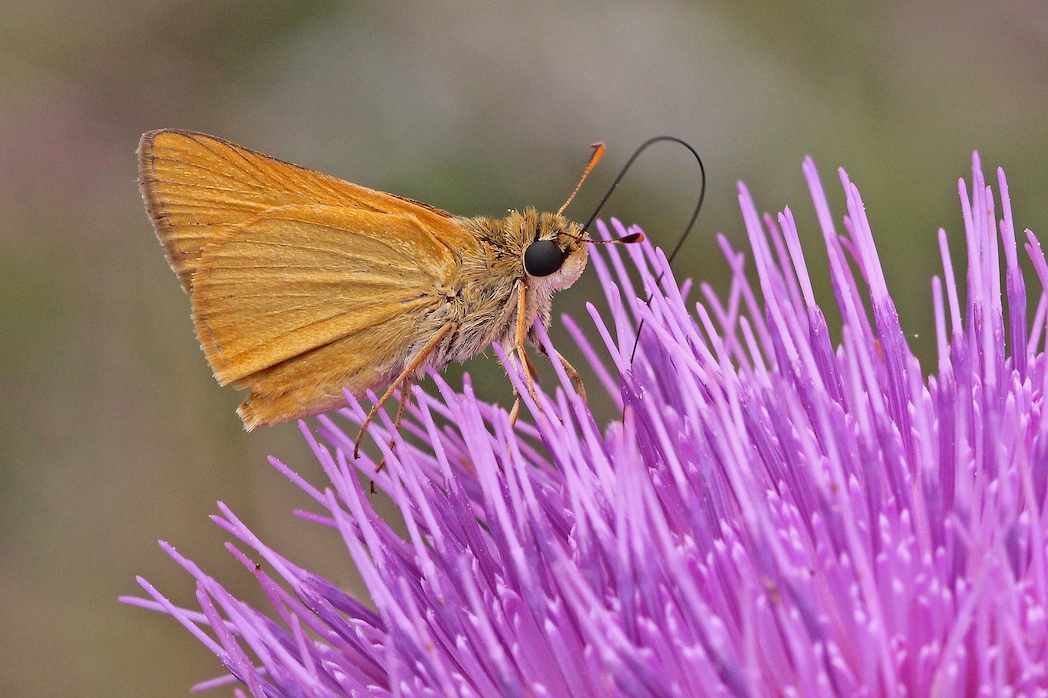Delaware skipper
“Know your native pollinators” is a series of articles that will help you identify and appreciate Florida’s varied pollinators, including bees, wasps, butterflies, moths, beetles, flies, birds and bats. Pictured above: Delaware skipper on Purple thistle (Cirsium horridulum) by Mary Keim.
Discovered near Philadelphia, the Delaware skipper most likely was named for the Delaware (Lenni Lenape) tribes of Native Americans who lived in that area. Despite its name, the Delaware skipper was once rare in the Northeast, and usually was found only in southern states such as Florida!
CLASSIFICATION
Class: Insecta
Order: Lepidoptera
Family: Hesperiidae
Subfamily: Hesperiinae
Genus species: Anatrytone logan
FORAGING PREFERENCES
The Delaware skipper nectars on a variety of flowers. Swamp milkweed (Asclepias incarnata), Butterflyweed (Asclepias tuberosa), Purple thistle (Cirsium horridulum), Buttonbush (Cephalanthus occidentalis), Eastern purple coneflower (Echinacea purpurea), Softhair coneflower (Rudbeckia mollis), Blackeyed susan (Rudbeckia hirta), Florida phlox (Phlox floridana), Dense gayfeather (Liatris spicata) and Pickerelweed (Pontederia cordata) are some examples. Its long proboscis allows it to extract nectar from flowers with deep floral tubes, such as Trumpet creeper (Campsis radicans).
IDENTIFICATION
The Delaware skipper is bright orange with a small wingspan of 1–1 ½ inches. The upper side of each wing has a black border and black veins near the margins. The underside of the wing has no markings, but veins may be dark orange. The forewing has a black bar toward the end of the wing. Female Delaware skippers have darker markings and wider borders.
HABITAT
The Delaware skipper can be found throughout the eastern half of the United States from Canada to southern Florida. Once rare in northern states, this skipper has become widespread throughout the northeastern U.S. in the last century. Delaware skippers are also found in the Mexican highlands and El Salvador.
Delaware skippers are attracted to grassy meadows and wet areas, but can be found in almost any habitat, including dry pine forests, sawgrass bogs, marshes, fields, roadsides and gardens.

Delaware skipper on Buttonbush (Cephalanthus occidentalis). Photo by Mary Keim
LIFE CYCLE
In Florida, Delaware skippers may produce several broods from February until October. Further north, only one or two broods are produced. Females deposit white eggs singly on the host plant. Host grasses include Big bluestem (Andropogon gerardii), Switchgrass (Panicum virgatum) and Silver plumegrass (Saccharum alopecuroides). Caterpillars use these leaves to make nests. Delaware skipper larvae are bluish-white with black dots and a crescent-shaped bar at the rear. Their head is white with black bands.
References:
- Bigner, Patty and Fred Miller. “Delaware Skipper.” Gardens with Wings. 2019.
- Lotts, Kelly and Thomas Naberhaus, coordinators. “Delaware Skipper.” 2017. Butterflies and Moths of North America. 2019.
- Missouri Department of Conservation. “Delaware Skipper.” 2019.
- Stichter, Sharon. “Delaware Skipper.” The Butterflies of Massachusetts. 2014.
- University of South Florida Water Institute. “Delaware Skipper.” Alabama Butterfly Atlas. 2019.

